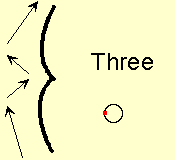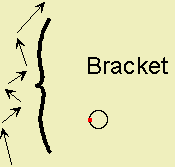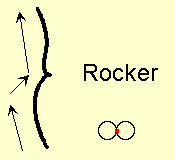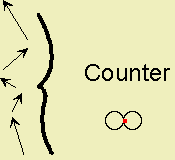Recognizing the Turns - 1-Foot
One-foot turns are most
recognizable when performed in a “compulsory figure” pattern where the
tracing becomes obvious, but all may be performed while freeskating. Indeed,
each of the turns is a central figure in at least one of the Moves-in-the-Field
patterns.
Three-Turn
The Three-Turn earns it's name because of the resemblance of it's tracing to the
printed number “3”. It is a one foot turn which, if skated on a compulsory
figure stays on the same circle, but changes direction and edge. For instance, a
three-turn started on a left forward outside edge (my personal favorite)
finishes on a left back inside edge. The direction of the “cusp” (the pointy
part) of the three-turn is toward the center of the circle which is being
skated.
|
 |
Bracket
The Bracket is similar to the three-turn in that it stays on the same circle,
and changes direction and edge. The difference is that the cusp (pointy part)
points AWAY FROM the center of the circle being skated. It is generally
considered to be a more difficult turn. The Bracket earns it's name because of
the resemblance of it's tracing to the printed “brace” or “bracket”
character ( } ).
|
 |
Rocker
The Rocker is a turn which, if performed on a compulsory figure, would move the
skater from one circle onto a different one. The Rocker changes circle and
direction, but maintains the same edge. For instance, a Rocker entered on the
Right Forward Outside edge will finish on a Right Back Outside edge. The cusp of
the Rocker points toward the center of the original circle (the direction of the
rotation in the turn is “normal”).
|
 |
Counter
The Counter is another turn which, if performed on a compulsory figure, would
move the skater from one circle onto a different one. The Counter changes circle
and direction, but maintains the same edge. For instance, a Counter entered on
the Right Forward Outside edge will finish on a Right Back Outside edge. The
cusp of the Counter points AWAY FROM the center of the original circle (the
direction of the rotation in the turn is “counter”).
|
 |



